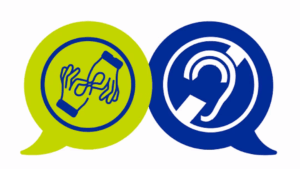Methods to enhance language skills
Language training methods may be taught as general school subjects, through specialized training schools, or even through online courses.
Many different methods are used to teach languages. Some have fallen into relative obscurity while others are widely used. However, even those with a small following offer useful insight. Three of these methods enjoy significant use and dominate the language market.
Each method has distinct advantages and disadvantages. Many language-training sources speak about exclusive or unique approaches. However, their lessons typically include one of the following three methods with rare exceptions.
The Direct Method, the Grammar-Translation Method, and the Audio-Lingual Method
The Direct Method is also known as the Oral or Natural Method, it’s based on active learner involvement. The learner speaks and listens to the new language in realistic everyday situations. The process consists of a gradual acquisition of grammatical structure and vocabulary. The learner is encouraged to think in the target language, they hear and use the language before seeing it written. Written homework reinforces the lesson and ties it together.
Grammar-Translation Methodology is based written language analysis. It uses translation exercises, reading comprehension, and written text. Language-learning mainly involves mastering grammatical rules and memorizing vocabulary lists. This method grew from the traditional method of teaching Latin and Greek.
The third most recognized language training method is the Audio-Lingual Method, also known as the Aural-Oral Method. It is a self-taught method. Learning is based on dialogue repetition. The dialogues are centered around everyday situations, they’re imitated and drilled to make the response automatic. Reading and writing reinforce what the student practices.
Global Arena focuses on reaching your language learning goals and tailor-makes classes based on the initial assessment. Learn how our services can work for you today!

Less-popular language training methods
A well-known but less-popular language learning method is The Structural Approach Method. This method treats language as a system with elements that have a coded meaning. Language is set as a complex system of grammatical rules which need to be learned one at a time, for example, the verb “to be” is introduced and practiced. Then, the student learns present continuous tense, which uses “to be” as an auxiliary.
Communicative Language Teaching (CLT), also known as the Communicative Approach, is another language-learning method. It focuses on interaction as the ultimate goal of learning a new language. This method’s focus is to enable the learner to communicate effectively and appropriately. It’s structured around the various situations in which the learner would be likely to find themselves. CLT courses include lessons on inviting, suggesting, complaining, and the expression of time, quantity, and location. This method has been criticized as outdated for several years but it continues to be popular, particularly in Europe.
The Suggestopedia Method is an additional language learning method based on pseudoscience. The theory allows the student to choose between several methodologies to eliminate any mental blocks that could impede progress. This method had very strong critics and was slowly removed from popular language-learning methods.
Other Approaches to Language-learning
The Immersion Method is particularly popular in the United States. It’s also called Foreign Language Immersion, Dual Immersion, or Indigenous Immersion. Students speak and work in the language for the whole school day. The school teaches all lessons in the desired language.
An additional technique of learning a new language is the Natural Approach. This combines the similarities between learning the first and second languages. This theory believes that there are no mistakes. It focuses on language exposure over all else.
Lastly, the Lexical Syllabus is based on computer analysis. The system identifies the most common words in the desired language and their variety of uses. This approach teaches these words in frequency order.
Finding the approach for your success
Learning a new language is a challenge. There are many different styles of learning. This article gives a comprehensive view of some of the most popular. Some, such as The Direct Method, The Grammar-Translation Method, and The Audio-Lingual Method are widely used throughout the world. Others, including The Structural Approach, Communicative Language Teaching (CLT), Suggestopedia, Immersion, Natural Approach, and Lexical Syllabus are less common. The fact that a method is less common doesn’t invalidate it. Some students find that they suit their needs.
Private lessons include a blend of all of these methods. The most effective teachers tend to be native language speakers. A native language speaker understands not only the linguistic components but the cultural as well. It’s of the utmost importance to combine language learning with cultural understanding for a rounded level of fluency. A good teacher is able to connect and build rapport with their students as well as teach. Learning a language can be a vulnerable experience and feeling comfortable with your teacher makes an enormous difference. In-person or virtual classroom lessons with a face-to-face component make language learning natural. Face-to-face lessons also have the advantage of immediate pronunciation correction. Being able to see how the mouth forms the words you’re trying to pronounce can be invaluable. Finally, private lessons are fun! They’re a wonderful way to connect with a new culture in a known environment.
Learn a Language with Global Arena
Global Arena is a premier provider for language lessons. Our personalized approach also includes support from beginning to finish. From the moment you decide that you’d like to learn a new language to achieving fluency, we’re here to help! We offer in-person classroom, private lessons, and virtual classroom lessons from native speakers. We know that learning a language can be daunting and we want to make it as easy as possible. All age and skill levels are welcome: no one is “too amateur” to begin learning. It’s never too late to start.
There are several approaches for learning a language. It is important to research and decide which might work best for you. Persistence is key, and we’re also happy to work with you to help you find how you learn best. Give us a call! Talk with Global Arena and discover all your training options.




